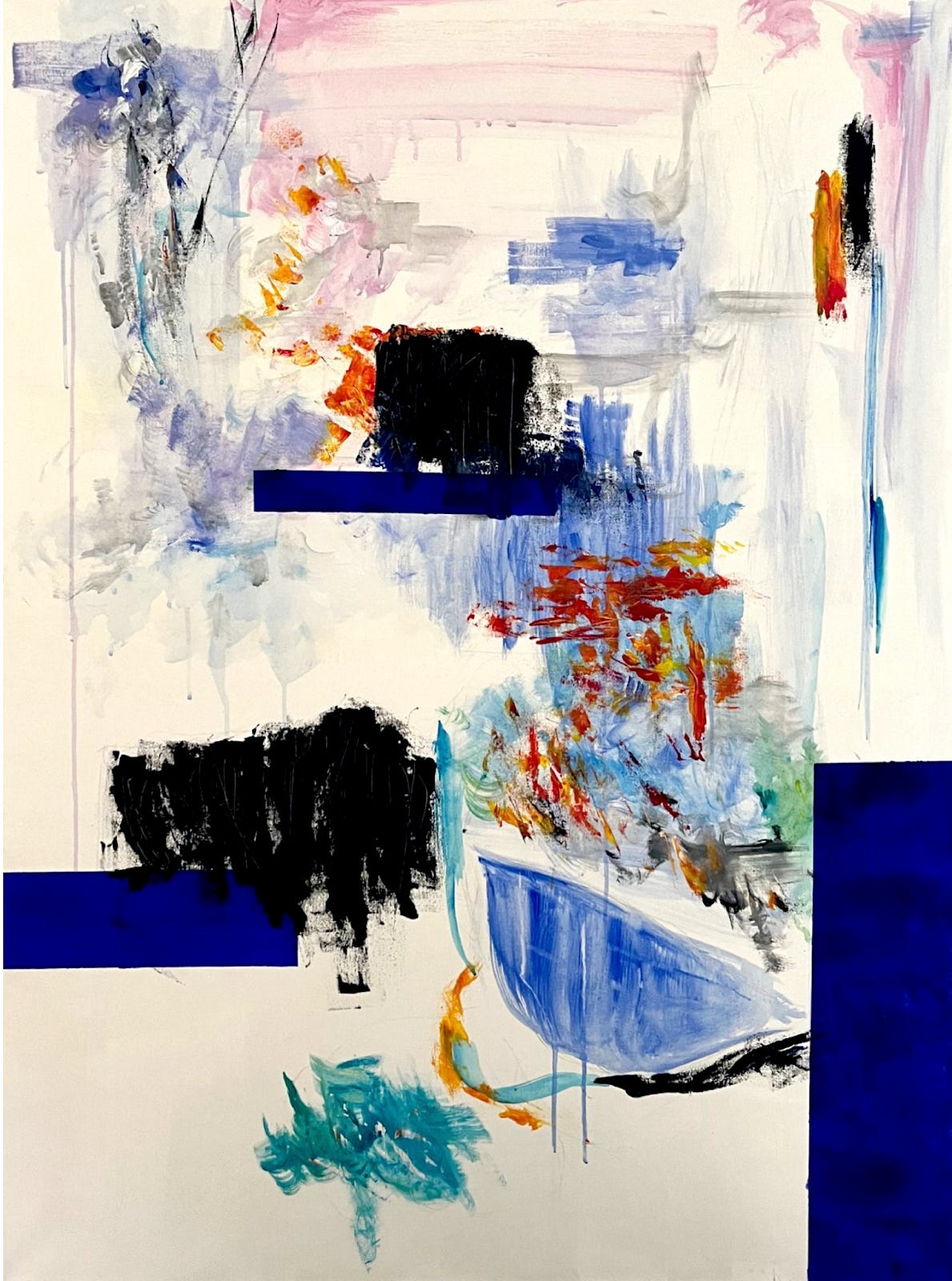An ideal Sunday morning for me is one spent in slow, sweet silence.
I’d get up and sneak out of the bedroom while Alex is still asleep. I’ll stare out the kitchen window as I wait for my tea to steep, watching stray pedestrians wander through a not yet awakened Fifth Avenue.
My tea would be ready. I’d take a sip. I may take out a big bunch of lush chrysanthemum greens from the fridge, run my fingers through their serrated edges, gently rinse them and set them aside to dry - a fabulous lunch salad awaits.
I may then bring my tea over to the couch and curl up with a good book. Or I may wander over to my easel, feel the alluring invitation of a blank canvas and pick up a paint brush. Hours pass by and it would be time for lunch. I would toss the chrysanthemum greens in olive oil and lemon juice, sprinkle in salt and pepper, and grate an avalanche of Pecorino Romano on top. Alex would be awake by now, we’d share the herbaceous greens and feel like we’re at Don Angie again.

By design, my Sunday mornings do not scale: this is my small, sheltered segment of the week where things can just be - working with my hands, in tactile contact with beauty, sharing something handmade as a consumable gift - I dream of doing it again the following Sunday.
I’ve been thinking a lot recently about the things, processes, moments, and experiences that do not scale:
At the end of Michael R. Jackson’s 3-hour-long White Girl In Danger off-Broadway, I realized the cast would do this all again tomorrow, with someone else in my seat. Yet, the only way to preserve and share the show’s magic is for the cast to treat tonight as the one and only night, so they can give it their best to the audience for whom this will likely be the one and only night. Until tomorrow.
Painting, one of my favorite artistic mediums, also does not scale. For one, the painstaking, mechanical techniques of painting have remained mostly the same since the Old Masters’ time. Moreover, the concept of “scale” is completely at odds with how most would approach and consume paintings: the experience of visiting a museum to stand before a painting is not nearly as instantly accessible to the masses as the never-ending scroll of bite-sized social media.
Why, then, bother with things that don’t scale?
In The Gift, Lewis Hyde draws a distinction between “worth” and “value”: worth refers to the things we prize and yet “can’t put a price on”, whereas value, on the other hand, derives from the comparison of one thing with another. Commodities have market value, and gifts, however broadly defined, have worth.
A related dichotomy is the one between eros and logos. Valuation, and market economies in general, is an emanation of logos (reason and logic), as opposed to the eros of gifts, the attraction, union, and tantalizing bond that arise from wholeheartedly dedicating oneself to something while expecting nothing in return. It stirs something in us. Logos-driven value is transactional and scalable, but worth cannot be - it is a copula, a gift - that transforms.
I love this line from
who writes , about the eros in her want for beauty:“When something is beautiful, I want to be close to it. Wear it, hold it, share it, eat it. If a pair of shoes is too big I still want it, not to wear but to look at and experience as art.
It is the same want and eros that draws Wayne Thiebaud again and again to his glistening cakes and O’Keeffe to the vast desert. It is the same reason I love art, painting, and working with my hands. It is an emotional attachment to material beauty: how I love the dynamism in Joan Mitchell’s color, the delicate soft crinkles of dewy butter lettuce, an electric shade of paint slathered onto crisp canvas, how I dream of summer galettes from the fragrant blush of farmers market strawberries. In these forms of love, it’s never about measuring, counting, reckoning value, or generating returns - the self is self-forgetful, in a state of flow. It’s John Stuart Mill’s hedonism, pleasure that we desire not as a means to end but as an end in itself.
Whenever I tell people (especially in finance and tech circles) about my more creative interests, I always get told that I should go build something out of it. Take commissions on your paintings. Go monetize. It is a natural extension of the logos and growth-driven ethos in my day job in investing. But it gives me pause: I treasure my status quo of curating and creating beauty and writing about beautiful things for my own enjoyment. Perhaps it is self-indulgent and vain, but the eros of how all of this cannot scale is what makes everything even more precious - the bonding gifts between me and all that is worthy.

I wish you a glorious Sunday morning.







